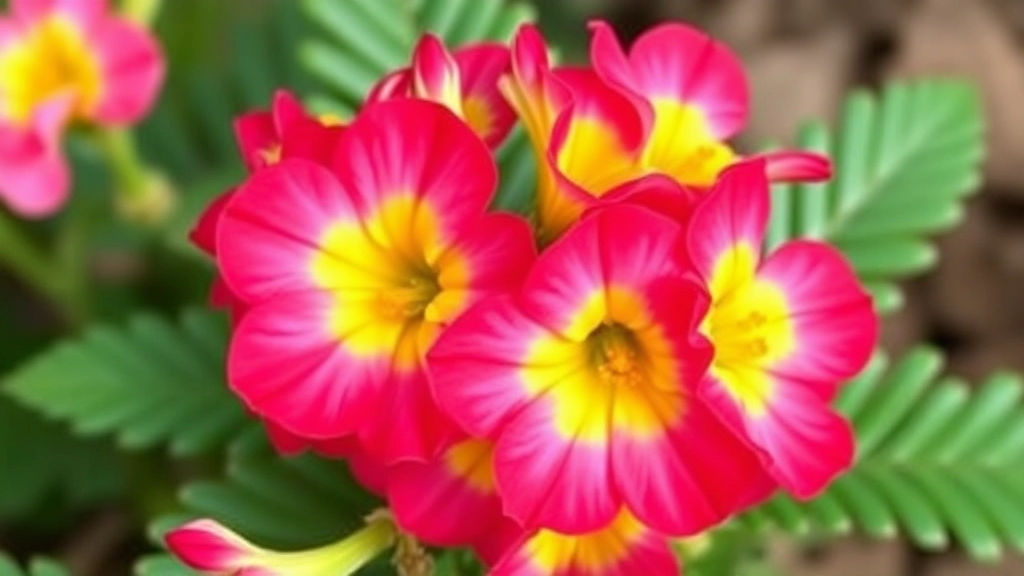Do Kalanchoe Plants Flower?
Wondering if all kalanchoe plants flower? You’re not alone. Many gardeners, both newbies and seasoned pros, are curious about the blooming habits of these popular succulents. Yes, most kalanchoe species do flower, but their ability to bloom hinges on a few key factors like light, watering, and dormancy periods.
Creating the Right Conditions
To get your kalanchoe to bloom, it’s essential to provide the right conditions. Adequate sunlight, proper watering techniques, and understanding the importance of a resting period can make all the difference. In this guide, we’ll dive into everything you need to know to encourage and sustain those beautiful kalanchoe blooms year-round.
When it comes to Kalanchoe, a common concern among plant enthusiasts is whether all species within this diverse genus produce flowers.
Not all Kalanchoe species are created equal in terms of flowering. While many are known for their vibrant blooms, some species are primarily cultivated for their foliage.
Key Points to Consider:
– **Flowering Species:** Varieties like [Kalanchoe blossfeldiana](https://planthq.org/how-to-grow-kalanchoe-blossfeldiana-from-seeds/) and [Kalanchoe tomentosa](https://planthq.org/succulent-kalanchoe-tomentosa-care-tips-and-growing-guide/) are celebrated for their showy flowers.
– **Non-Flowering Species:** Others, such as Kalanchoe luciae, are more appreciated for their striking leaves and may not produce flowers under typical care conditions.
– **Cultivation Focus:** Many growers opt for flowering species to enhance their indoor or outdoor spaces, but understanding the specific characteristics of each species is crucial.
Factors That Influence Kalanchoe Flowering
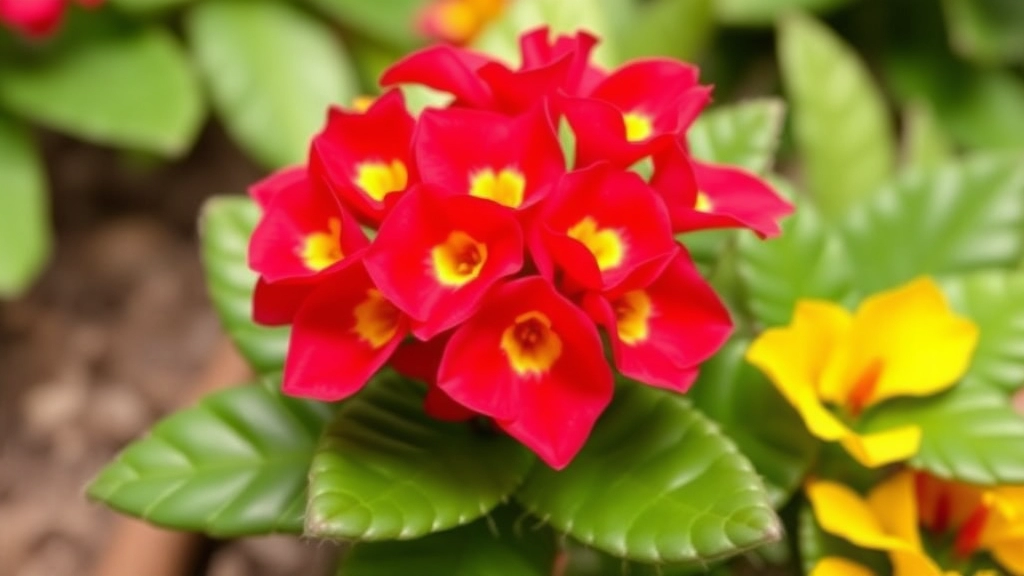
Have you ever wondered why some Kalanchoe plants burst into bloom while others sit quietly, green but flowerless? It can be a bit of a puzzle, but several factors play a crucial role in whether your Kalanchoe decides to show off its vibrant flowers.
Light Exposure
First off, let’s talk about light. Kalanchoes are sun lovers. They thrive in bright, indirect sunlight.
- Too Little Light: If your plant is in a dim corner, it might just sulk and skip flowering altogether.
- Too Much Direct Sun: On the flip side, too much harsh sunlight can scorch their leaves.
Finding that sweet spot can make all the difference in encouraging those blooms.
Temperature
Next up is temperature. Kalanchoes prefer a warm environment.
- Ideal Range: Aim for temperatures between 15°C and 25°C.
- Cold Stress: If it dips below 10°C, your plant may go into shock, halting blooming.
Keeping them cozy is key to flowering success.
Watering Habits
Watering can be a tricky balancing act. Kalanchoes are succulents, meaning they store water in their leaves.
- Overwatering: Too much water can lead to root rot and flower drop.
- Underwatering: On the other hand, let them dry out completely, and they might just give up on flowering.
A good rule of thumb is to let the soil dry out between waterings.
Nutrient Levels
Lastly, let’s not forget about nutrients. The right fertilization can give your Kalanchoe the boost it needs to flower.
- Balanced Fertilizer: Use a balanced, water-soluble fertilizer every 4-6 weeks during the growing season.
- Too Much Nitrogen: Be careful with nitrogen; too much can lead to lush leaves but few flowers.
Nourishing your plant properly can lead to a spectacular show of blooms.
Light Requirements for Optimal Kalanchoe Blooms
Have you ever wondered why your Kalanchoe isn’t blooming as beautifully as you’d hoped?
Light plays a pivotal role in the flowering process of Kalanchoe plants.
To ensure your Kalanchoe thrives and produces vibrant blooms, consider the following light requirements:
Watering Tips to Encourage Flowering
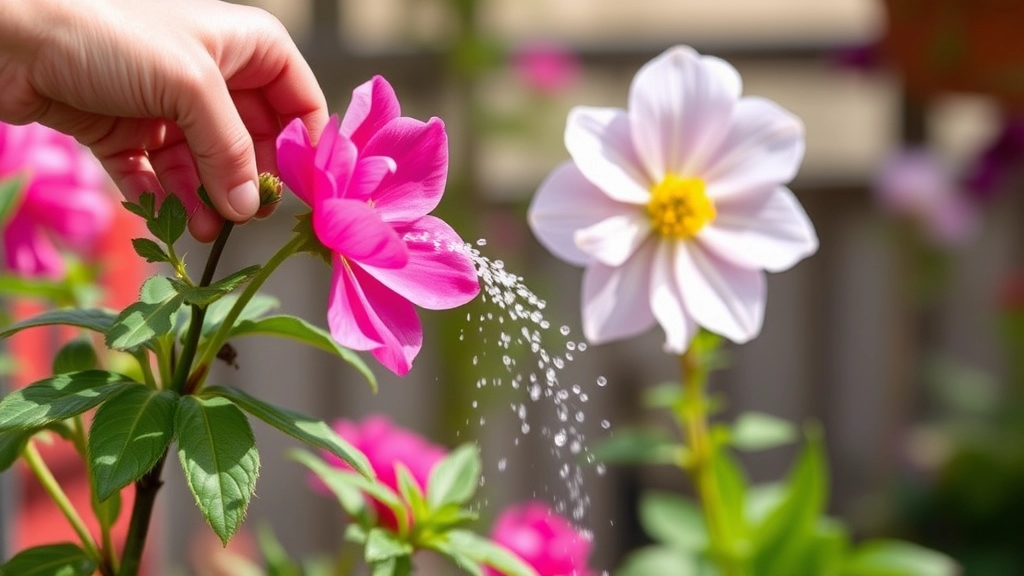
When it comes to nurturing your Kalanchoe, watering is a crucial aspect that directly influences flowering. Many of us worry about how much or how little to water our plants, especially when we want them to bloom beautifully.
Understanding Kalanchoe’s Water Needs
Kalanchoe is a succulent, meaning it stores water in its leaves. This unique trait allows it to thrive in dry conditions, but it also means that overwatering can be detrimental. Here are some key watering tips to encourage flowering:
- Water Sparingly: Allow the top inch of soil to dry out before watering again. This prevents root rot and encourages the plant to focus on blooming.
- Check Soil Moisture: Use your finger to check the soil. If it feels dry, it’s time to water. If it’s still moist, wait a few days.
- Watering Method: Water thoroughly until it drains from the bottom of the pot. This ensures that the roots get enough moisture.
- Seasonal Adjustments: During the growing season (spring and summer), increase watering frequency slightly, but always let the soil dry out in between.
- Reduce in Dormancy: In the fall and winter, reduce watering significantly as the plant enters a dormant phase, which is essential for reblooming later.
By following these watering tips, you can create an environment that encourages your Kalanchoe to produce stunning flowers.
Have you ever wondered why your Kalanchoe seems to go through phases of vibrant blooms and then suddenly stops?
The dormancy period plays a crucial role in the reblooming cycle of Kalanchoe plants.
During this time, the plant conserves energy and prepares for the next blooming season.
Understanding the importance of this phase can make all the difference in achieving year-round flowers.
Key Points on Dormancy:
– **Energy Conservation**: During dormancy, Kalanchoe reduces its metabolic activities, allowing it to store energy for future growth and blooming.
– **Natural Cycle**: This period mimics the plant’s natural habitat, where seasonal changes dictate growth patterns.
– **Stress Relief**: A well-timed dormancy can help the plant recover from stress, ensuring healthier blooms when the time comes.
– **Timing**: Typically, dormancy occurs in late autumn through winter. Recognising this cycle helps you adjust care routines accordingly.
To encourage blooming after dormancy, it’s essential to gradually reintroduce light and water. For more detailed tips, you can check out our [Florist Kalanchoe Plant Care Guide](https://planthq.org/florist-kalanchoe-plant-care-grow-rebloom-thrive-indoors/).
By respecting this natural rhythm, you set the stage for a stunning display of flowers. If you’re interested in more specific care techniques, visit our guide on [Pruning Kalanchoe Plants](https://planthq.org/pruning-kalanchoe-plants-best-tips-and-techniques/).
How to Make a Kalanchoe Rebloom Year-Round
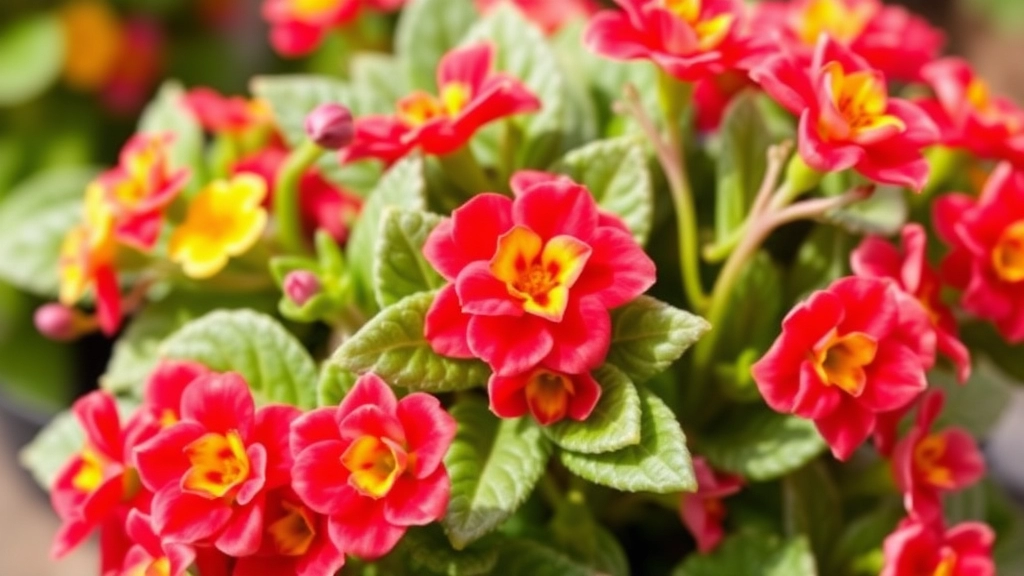
So, you’ve got your Kalanchoe blooming beautifully, but how do you keep that floral show going all year? It’s a common concern for many plant lovers, but don’t worry—I’ve got you covered.
Understanding the Reblooming Process
First off, Kalanchoes are not just one-hit wonders. With the right care, you can coax them into blooming multiple times a year. Here’s how:
- Light Control: Kalanchoes thrive on bright, indirect sunlight. To encourage reblooming, consider giving them 12-14 hours of light daily. A grow light can do wonders if natural light is lacking.
- Temperature: Keep your Kalanchoe in a warm spot, ideally between 20-25°C (68-77°F). They love warmth but can be sensitive to extreme temperatures.
- Watering Schedule: Don’t drown your Kalanchoe! Water it thoroughly, then let the soil dry out before the next watering. This helps simulate a dry season, prompting your plant to bloom again.
Fertilization for Success
A little extra love in the form of fertiliser can go a long way. Use a balanced, water-soluble fertiliser every 4-6 weeks during the growing season. This will give your Kalanchoe the nutrients it needs to produce those stunning flowers.
Pruning for New Growth
After your Kalanchoe has finished flowering, don’t just leave it be. Prune back the spent blooms and any leggy growth. This encourages new shoots, which can lead to more flowers.
Creating a Dormancy Period
Lastly, don’t forget about dormancy. Allow your Kalanchoe to have a rest period by reducing watering and fertilising during the winter months. This helps your plant gather energy for the next blooming cycle.
### Best Fertilization Practices for Kalanchoe Blooms
When it comes to nurturing your Kalanchoe, the right fertilization practices can make all the difference in achieving vibrant blooms. You might be wondering, “What type of fertiliser should I use?” or “How often should I feed my Kalanchoe?” Let’s dive into the best practices to ensure your Kalanchoe thrives.
#### Choosing the Right Fertiliser
Common Kalanchoe Species Known for Flowers
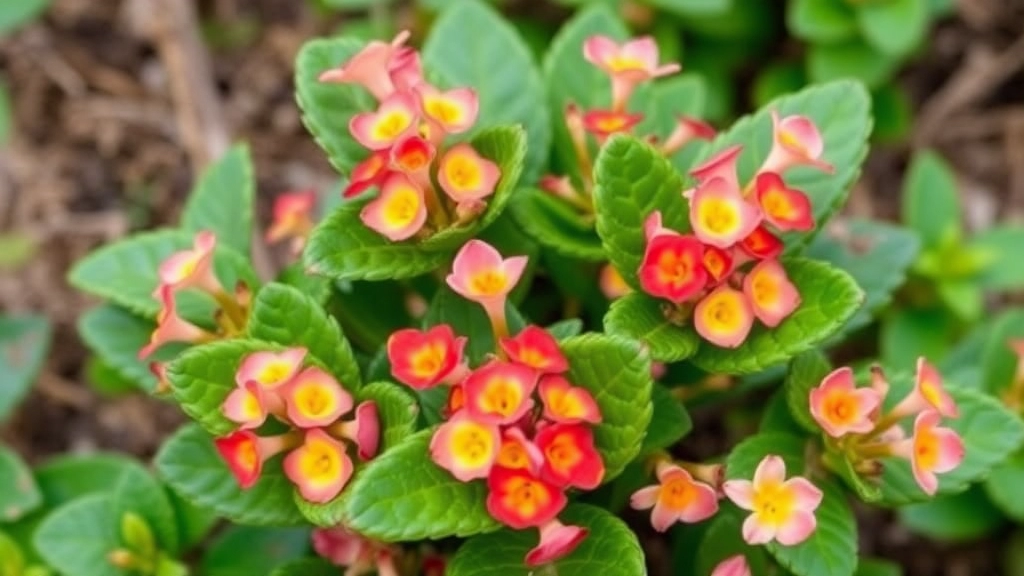
So, you’re keen to know which Kalanchoe species are the real show-stoppers when it comes to flowering?
Let’s dive into some of the most popular ones that can light up your space with vibrant blooms.
1. Kalanchoe blossfeldiana
- Often called the Flaming Katy.
- Known for its bright, clustered flowers.
- Blooms in shades of red, pink, yellow, and white.
- A popular choice for indoor gardens!
2. Kalanchoe tomentosa
- Commonly known as Panda Plant.
- Has fuzzy leaves with a unique look.
- While it’s more about the foliage, it does produce small, tubular flowers.
3. Kalanchoe luciae
- Also known as the Paddle Plant.
- Features stunning, flat leaves that turn a beautiful red when stressed.
- Produces tall flower spikes adorned with yellow blooms.
4. Kalanchoe beharensis
- Often called the Elephant Bush.
- Known for its large, thick leaves.
- While not a prolific bloomer, it can surprise you with clusters of small flowers.
5. Kalanchoe ‘Pink Butterflies’
- This hybrid is a crowd-pleaser.
- Boasts soft pink flowers that resemble butterflies.
- Perfect for adding a touch of whimsy to your collection.
These species not only brighten your home but also add a splash of personality to your plant collection.
Many Kalanchoe enthusiasts find themselves frustrated when their plants fail to bloom. If you’ve nurtured your Kalanchoe and still see no flowers, you’re not alone. Let’s explore some common issues and how to resolve them.
### Common Flowering Problems
– **Insufficient Light**
Kalanchoe requires bright, indirect sunlight for optimal flowering. If your plant is in a dim corner, it may not produce blooms.
*Solution:* Move your Kalanchoe to a sunnier spot, ideally near a south-facing window. For more detailed lighting tips, check out our [expert guide on flowering Kalanchoe care](https://planthq.org/ultimate-guide-to-flowering-kalanchoe-care-tips-for-blooming/).
– **Overwatering**
Too much water can lead to root rot, which hinders flowering.
*Solution:* Ensure the pot has drainage holes and allow the soil to dry out between waterings.
– **Nutrient Deficiency**
A lack of essential nutrients can stunt growth and flowering.
*Solution:* Use a balanced fertiliser during the growing season to provide necessary nutrients.
– **Temperature Fluctuations**
Kalanchoe thrives in stable temperatures. Extreme heat or cold can cause stress.
*Solution:* Keep your plant in a stable environment, ideally between 15-25°C.
– **Lack of Dormancy**
Kalanchoe needs a dormancy period to bloom again.
*Solution:* Allow your plant to rest by reducing watering and keeping it in a cooler location for a few weeks.
### Additional Considerations
– **Pest Infestation**
Check for pests like aphids or mealybugs, which can sap energy from your plant.
*Solution:* Treat with insecticidal soap or neem oil. Learn more about effective pest control in our [complete care guide for Kalanchoe Panda Plant](https://planthq.org/complete-care-guide-for-kalanchoe-panda-plant/).
– **Improper Pruning**
Incorrect pruning can affect blooming.
*Solution:* Trim spent flowers and leaves to encourage new growth.
Seasonal Care to Maximize Kalanchoe Blooms
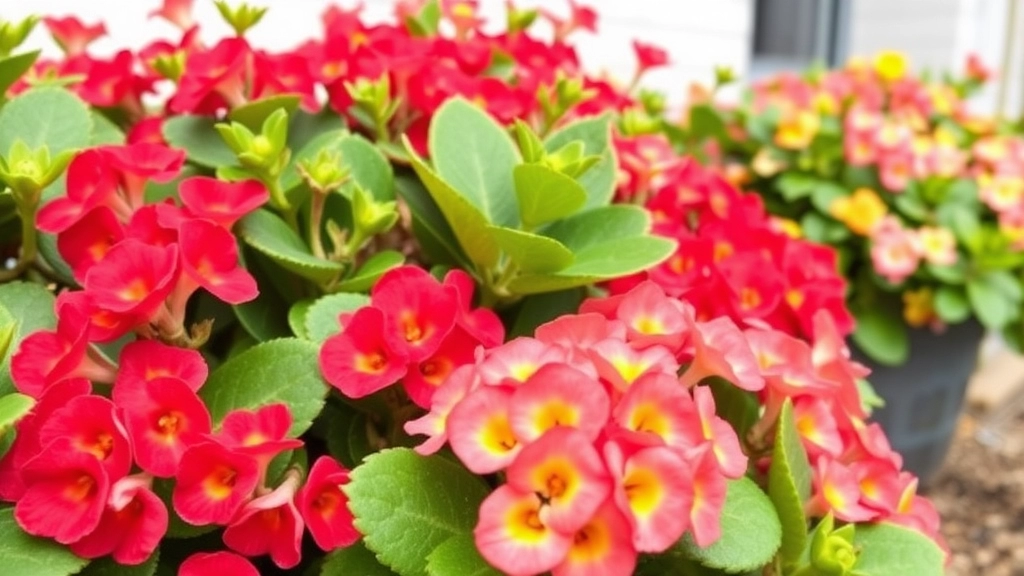
Are you wondering how to keep your Kalanchoe blooming beautifully throughout the seasons? You’re not alone! Many plant lovers face the same challenge. But don’t worry; with the right seasonal care, you can ensure your Kalanchoe flourishes year-round.
Spring: Time to Shine
As spring rolls in, it’s the perfect time to give your Kalanchoe a little extra love.
- Repotting: If your plant has outgrown its pot, consider repotting it in fresh soil. This gives it room to grow and access to new nutrients.
- Sunlight: Ensure it gets plenty of bright, indirect light. This is crucial for those vibrant blooms.
- Watering: Start watering more frequently, but make sure the soil dries out between waterings.
Summer: Keep It Cool
Summer can be a tricky time for Kalanchoe.
- Shade: If temperatures soar, provide some afternoon shade. Too much direct sun can scorch the leaves.
- Humidity: While Kalanchoe likes dry conditions, a bit of humidity can help. Misting the leaves occasionally can do wonders.
- Fertilizing: Use a balanced fertilizer every few weeks to support blooming.
Autumn: Prepare for Dormancy
As the days shorten, your Kalanchoe will start to prepare for its dormancy phase.
- Reduce Watering: Cut back on watering as the plant’s growth slows down.
- Light Adjustment: Ensure it gets enough light, but avoid harsh direct sunlight.
- Temperature: Keep it in a cooler spot; around 15-20°C is ideal.
Winter: Rest and Recharge
Winter is a time for your Kalanchoe to rest, but that doesn’t mean neglecting it!
- Minimal Watering: Water sparingly. The plant doesn’t need much as it’s in dormancy.
- Indirect Light: Place it near a window where it can still get light without being exposed to cold drafts.
- Check for Pests: Keep an eye out for any pests that might sneak in during the colder months.
Pruning and Maintenance for Prolonged Flowering
As we explore how to keep your Kalanchoe blooming beautifully, pruning and maintenance play a crucial role.
Many gardeners wonder, “How can I ensure my Kalanchoe continues to flower?” The answer lies in effective pruning and regular upkeep.
Why Pruning Matters
Pruning is essential for:
- Removing Dead Blooms: Snipping off spent flowers encourages new growth.
- Promoting Air Circulation: Thinning out crowded stems helps prevent diseases.
- Shaping the Plant: A well-shaped Kalanchoe not only looks good but also directs energy towards flowering.
When to Prune
- Post-Bloom: After your Kalanchoe has finished flowering, it’s the perfect time to prune.
- Spring: This season is ideal for a more extensive trim, allowing the plant to rejuvenate.
Pruning Steps
- Gather Your Tools: Use clean, sharp scissors or pruning shears.
- Identify Spent Flowers: Look for wilted blooms and yellowing leaves.
- Cut at the Base: Snip flowers just above the nearest leaf node to encourage new growth.
- Remove Leggy Growth: Trim back any long, straggly stems to promote a bushier appearance.
Maintenance Tips
In addition to pruning, regular maintenance is key to prolonged flowering:
- Watering: Ensure your Kalanchoe has well-draining soil. Water only when the top inch of soil feels dry. For more detailed watering tips, check out our Optimal Watering Tips for Healthy Florist Kalanchoe.
- Fertilisation: Use a balanced fertiliser every four to six weeks during the growing season.
- Pest Control: Keep an eye out for common pests like mealybugs and aphids. Treat promptly to avoid damage. Learn more about maintaining your plant’s health in our Outdoor Kalanchoe Care: Expert Tips and Best Practices.
By following these pruning and maintenance tips, your Kalanchoe will thrive and continue to produce vibrant blooms.
FAQs About Kalanchoe Flowering
Do all Kalanchoe plants flower?
Not all Kalanchoe plants flower under every condition. Factors such as light exposure, temperature, watering habits, and nutrient levels significantly influence whether a Kalanchoe will bloom.
What light conditions are best for Kalanchoe to flower?
Kalanchoes thrive in bright, indirect sunlight. Too little light can prevent flowering, while too much direct sun can scorch their leaves. Finding the right balance is crucial.
How does temperature affect Kalanchoe flowering?
Kalanchoes prefer temperatures between 15°C and 25°C. Temperatures below 10°C can cause cold stress, halting blooming. Keeping them in a warm environment is essential for flowering.
What are the best watering practices for encouraging Kalanchoe flowers?
Water sparingly and allow the soil to dry out between waterings. Overwatering can lead to root rot and flower drop, while underwatering can cause the plant to stop flowering.
How often should I fertilize my Kalanchoe for optimal blooming?
Use a balanced, water-soluble fertilizer every 4-6 weeks during the growing season. Be cautious with nitrogen levels, as too much nitrogen can lead to lush leaves but few flowers.
Can Kalanchoe rebloom year-round?
Yes, with proper care, Kalanchoes can rebloom multiple times a year. Ensure they receive adequate light, maintain a consistent watering schedule, and provide balanced fertilization. Pruning and creating a dormancy period also help in promoting reblooming.
Which Kalanchoe species are known for their flowers?
Some popular Kalanchoe species known for their vibrant blooms include:
- Kalanchoe blossfeldiana: Known for bright, clustered flowers in various colors.
- Kalanchoe tomentosa: Features small, tubular flowers and fuzzy leaves.
- Kalanchoe luciae: Produces tall flower spikes with yellow blooms.
- Kalanchoe beharensis: Occasionally blooms with clusters of small flowers.
- Kalanchoe ‘Pink Butterflies’: Boasts soft pink flowers resembling butterflies.
What seasonal care is needed to maximize Kalanchoe blooms?
Seasonal care tips include:
- Spring: Repot if needed, ensure bright light, and increase watering frequency.
- Summer: Provide afternoon shade, mist leaves occasionally, and fertilize regularly.
- Autumn: Reduce watering, adjust light, and keep in a cooler spot.
- Winter: Water sparingly, ensure indirect light, and check for pests.
By following these tips, you can ensure that your Kalanchoe blooms beautifully throughout the year.
References
-
How to Get a Kalanchoe to Bloom
-
Kalanchoe Plant Care: How to Grow and Care for Kalanchoe
-
Kalanchoe: How to Grow and Care for Kalanchoe Plants
